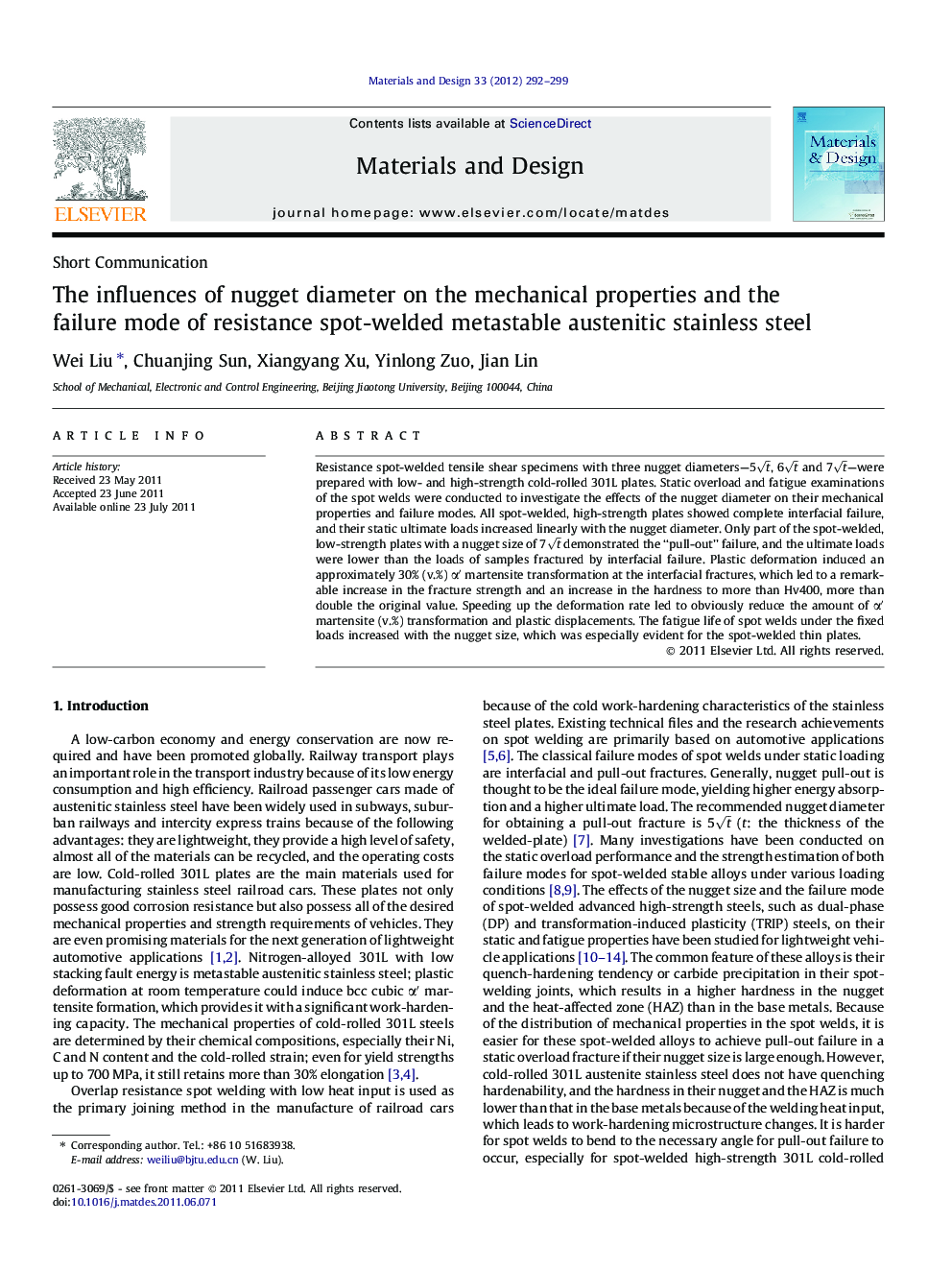| Article ID | Journal | Published Year | Pages | File Type |
|---|---|---|---|---|
| 831143 | Materials & Design (1980-2015) | 2012 | 8 Pages |
Resistance spot-welded tensile shear specimens with three nugget diameters—5t, 6t and 7t—were prepared with low- and high-strength cold-rolled 301L plates. Static overload and fatigue examinations of the spot welds were conducted to investigate the effects of the nugget diameter on their mechanical properties and failure modes. All spot-welded, high-strength plates showed complete interfacial failure, and their static ultimate loads increased linearly with the nugget diameter. Only part of the spot-welded, low-strength plates with a nugget size of 7t demonstrated the “pull-out” failure, and the ultimate loads were lower than the loads of samples fractured by interfacial failure. Plastic deformation induced an approximately 30% (v.%) α′ martensite transformation at the interfacial fractures, which led to a remarkable increase in the fracture strength and an increase in the hardness to more than Hv400, more than double the original value. Speeding up the deformation rate led to obviously reduce the amount of α′ martensite (v.%) transformation and plastic displacements. The fatigue life of spot welds under the fixed loads increased with the nugget size, which was especially evident for the spot-welded thin plates.
► The resistance spot welded low and high strength cold-rolled 301L plates with three nugget diameters 5t,6t,7t were prepared. ► The effects of nugget diameters on static loading performance and failure mechanism were investigated. ► BCC cubic martensite induced by failure deformation and hardness increase in the spot welds were discussed. ► The impacts of nugget diameters on fatigue resistance were examined.
